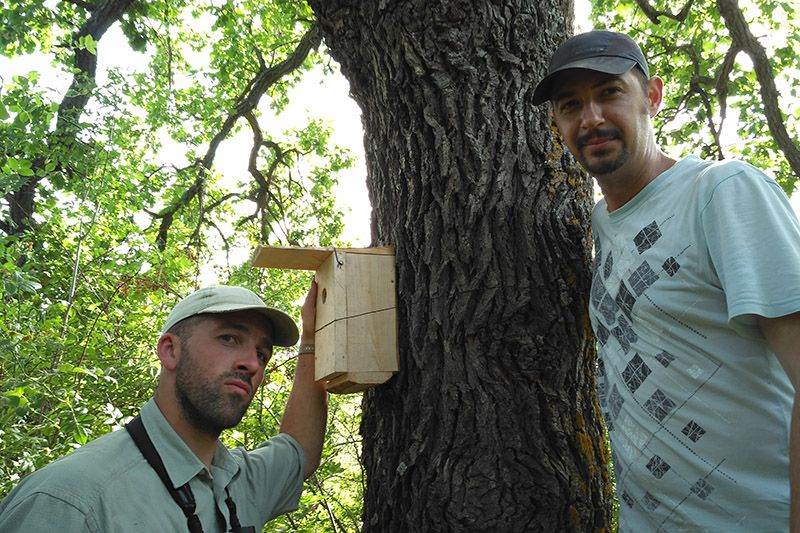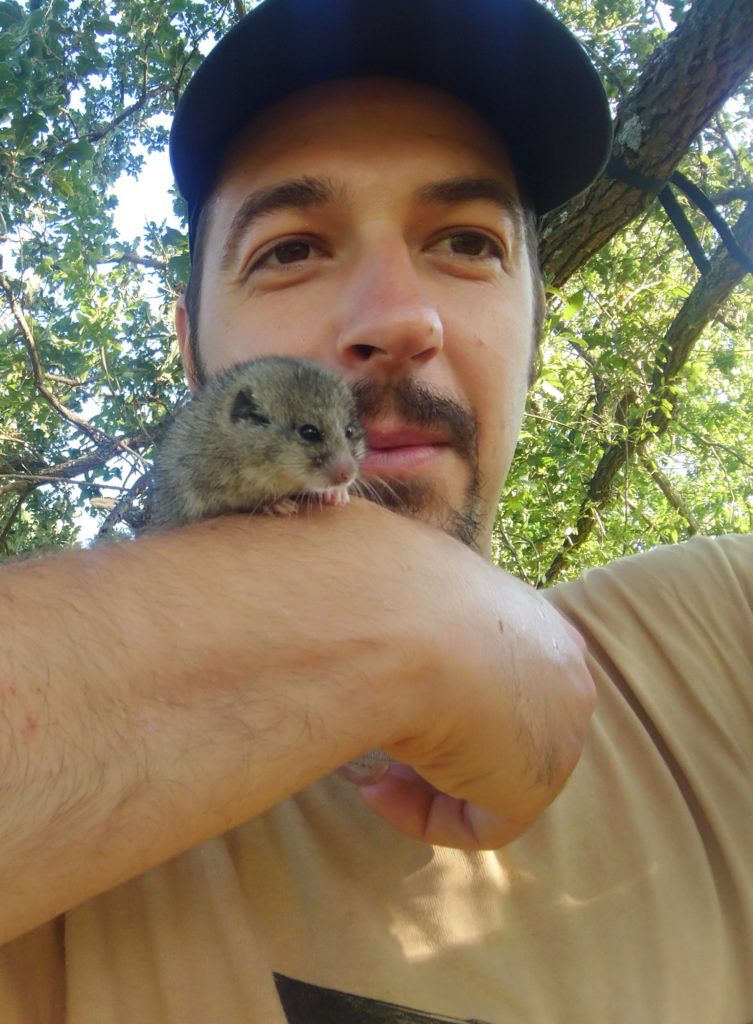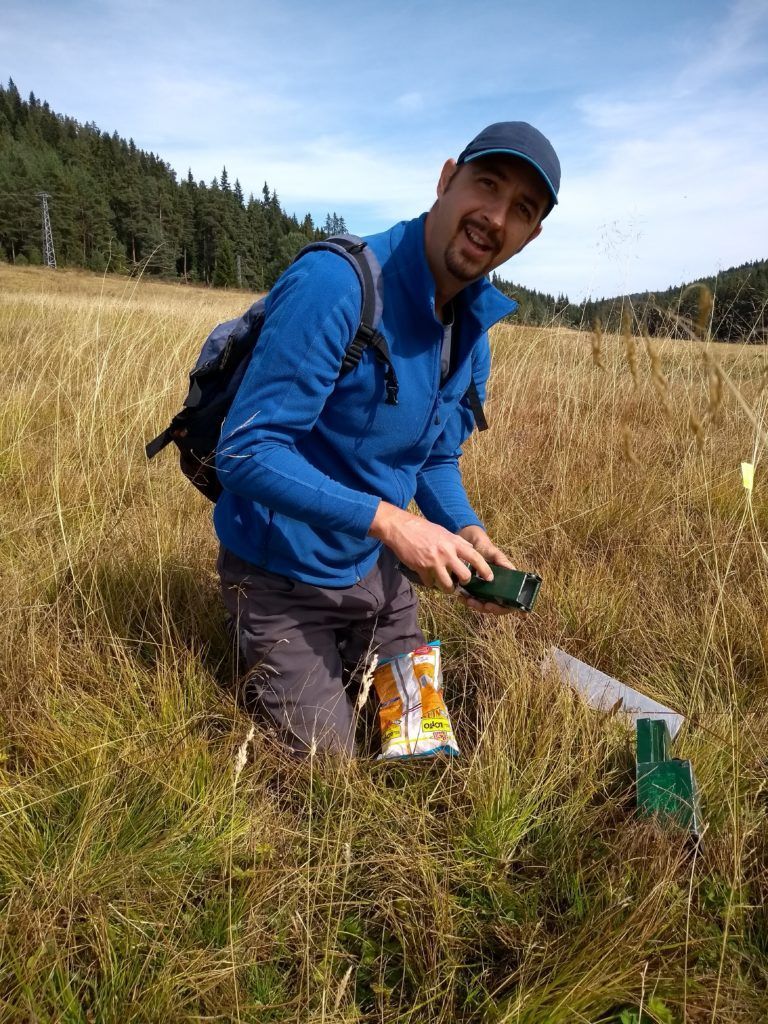Meet Nedko Nedyalkov: PTES project leader
In this series, we chat to the dedicated staff members, conservation partners and volunteers at PTES. We find out why each of them chose a career in wildlife conservation, what they find rewarding about their work and what they love most about what they do.
Europe is home to five species of dormice, including our own hazel dormouse. Garden, fat and forest dormice are also relatively well-known inhabitants of woodlands and green spaces across Europe. But the fifth species, Roach’s mouse-tailed dormouse, is so elusive that almost nothing is known about it. We aren’t even sure which countries it exists in. PTES gave funds to Nedko Nedyalkov at the Habitat Foundation in Bulgaria, to learn more about this secretive creature.
Nedko Nedyalkov
Scientist at the Habitat Foundation
Why did you decide to go into wildlife conservation?
I’m a scientist whose work focuses mainly on small mammals, particularly insectivores and rodents. I have really broad interests and I’d like to know as much as possible about the ecology, biology, taxonomy and evolution of the dormice and other creatures I study. Conservation is just part of my job. It’s vital for me to show others that these small creatures are as important as the big emblematic species such as apes, tigers, elephants and rhinoceros. In fact, I think they deserve even more attention than these well-known animals. Many of our small mammals are so rare and so little is known about them, especially endemic species (which only exist in small areas), that they are exceptionally vulnerable. They could just slowly and quietly disappear, before we even identify them. There aren’t many experts in this field, mainly because small mammals aren’t so appealing to the general public, and getting funding is often difficult.
Has your conservation work been rewarding and if so, in what way?
The short answer is: not yet! But, having said that, I do feel rewarded indirectly because my work has given me the opportunity (and great pleasure) to meet and learn from many established conservationists and scientists, who’ve been kind enough to share their experiences with me.
What are the main reasons for some of your greatest successes?
I can sum that up in three words: patience, persistence and work, accompanied by some knowledge and experience. I’m inspired by a quote of Thomas Jefferson’s who said: “I’m a greater believer in luck, and I find the harder I work the more I have of it”.

Reflecting on your past, what has been one of your most memorable experiences so far?
I remember the time I caught my first Roach’s mouse-tailed dormouse 10 years ago. I even remember the exact day; it was the 8th of August, in the European part of Turkey, not far from the Bulgarian border. We were live trapping small mammals together with colleagues from the Trakya University of Edirne. For the first few days we found very little, but on the last day of our field trap, in the very last trap (out of 50 traps) we found one mouse-tailed dormouse. It sounds like a movie, but I’ll never forget that moment. I’m very thankful to Ebru and Halim Diker, for sharing that experience with me!
What difficulties or challenges do you face in your work and how do you think you’ll overcome them?
Field work always presents so many challenges for every researcher: bad weather conditions (hot sun or rainy days), ticks, snakes, problems with the techniques and the equipment. Working in a team is challenging too, but, if you find the right people, you can work miracles. So many of these things you can’t learn at university or from reading books. The best way is just getting out there and doing it. It’s all down to personal experience.
How can we best inspire the younger generation and what advice would you give to young conservationists just starting out?
Be patient and work hard. One day you’ll be rewarded for it. Conservation work is something you need to be in for the long run. You don’t often see the results or impact of your work the next day. It takes time, sometimes even years. It’s difficult to protect and help a species you know almost nothing about. It took ten years for us to even find a living population of this species in Bulgaria. After that we started to permanently monitor them and during the last two years we’ve gathered crucial data and information about Roach’s mouse-tailed dormice. We’ve learned when they’re active and when they hibernate, when they breed and how many young they have. We have a better understanding now of their population including how many there are. But even this isn’t enough for us to take adequate conservation actions to help them.
What does the future hold? For you and for your species?
The last two years were definitely the most challenging for us. That experience will probably shape our immediate work too. In the coming year we’re hoping to host the next international dormice conference. It should have taken place here in Bulgaria in 2020, but was postponed twice because of the pandemic. I hope next year we’ll be able to go ahead and host it. It’s an important event for the dormouse community and it’s an opportunity for many experienced researchers to gather in one place, to share their results, their stories and for us to raise awareness in general about small mammals in the Balkans. These creatures are definitely over-looked and deserve much more attention. I’m continuing my work on Roach’s mouse-tailed dormice as there’s still lots that needs to be done. We’re working on an action plan for the species in Bulgaria. But this isn’t the only interesting species in the region, there are many others which need our interest and help too.
Find out more about Nedko’s work to protect Roach’s mouse tailed dormice in Bulgaria here:


